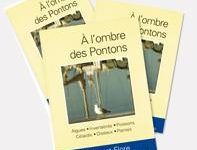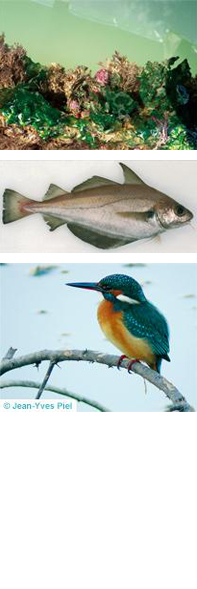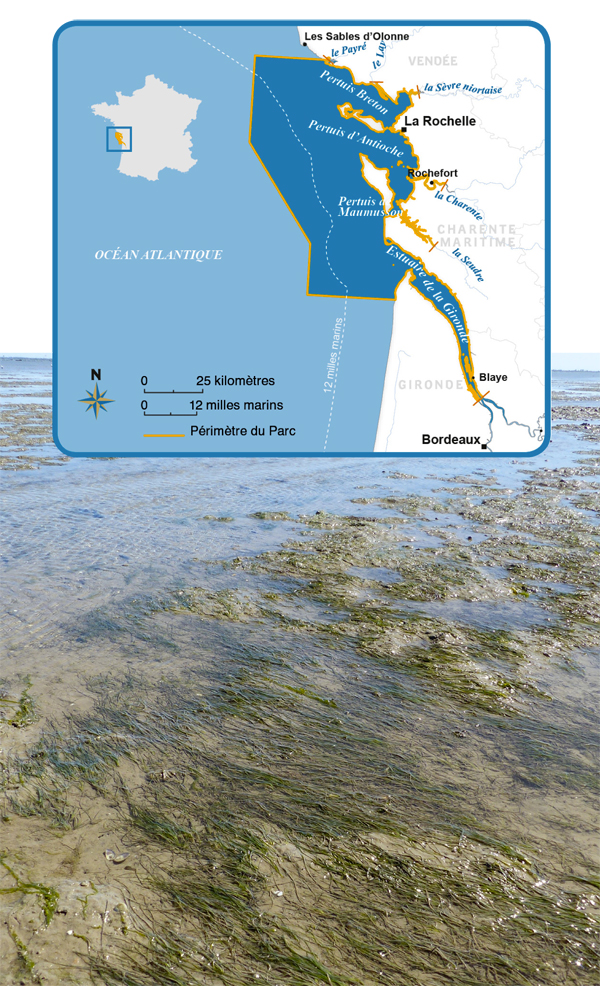An astonishing biodiversity
Perimeter of the “Estuaire de la Gironde/Mer
des Pertuis” Natural Marine Park

The “Estuaire de la Gironde/Mer des Pertuis”Natural Marine Park is a protected marine area created in 2015. It covers 6500 km² of water space and borders over 1000 km of coastline in Charente-Maritime, Vendée and Gironde.
Missions:
Preserving the marine area and increasing knowledge, while contributing to the sustainable development of maritime activities.
Features:
A vast marine area encompassing land and sea:
- Six estuaries including the Gironde estuary, the biggest in Western Europe.
- The sea of straits, a sheltered area with many islands.
- The open sea, with more oceanic influences.
Remarkable and fragile natural treasures:
- Varied habitats (sandy coasts, rocky foreshores, vast mudflats), which provide food and spawning grounds for numerous species.
- An ornithological crossroads of international importance.
- A migration corridor for diadromous fish (eels, sturgeons etc.).
I am involved in preserving the marine area

In the port :
- I use the port’s sanitary facilities, including for washing my dishes.
- I separate my recyclables.
- I choose the anti-fouling paint that is the least harmful to the environment.
- I use freshwater sparingly and opt for the port’s high-pressure washing station to rinse my boat.
At sea :
- I keep my blackwater and greywater in a tank that I empty with the port’s pumps.
- I moor away from the eelgrass beds.
- I keep my distance from fauna (birds, dolphins).
In the shade of the pontoons

 In 2006, the Régie du Plaisance in La Rochelle commissioned a renowned specialists to carry out a study on the biodiversity of the Minimes site, where 3600 pleasure craft are stationed. Edited in the form of a small booklet of a hundred pages entitled “In the shade of the pontoons”, the book reveals to everyone an environment full of life, animal or vegetable, far from the Image of the large sterile boat parking: invertebrates, algae, fish, cetaceans, birds and plants, have their place in a marina.
In 2006, the Régie du Plaisance in La Rochelle commissioned a renowned specialists to carry out a study on the biodiversity of the Minimes site, where 3600 pleasure craft are stationed. Edited in the form of a small booklet of a hundred pages entitled “In the shade of the pontoons”, the book reveals to everyone an environment full of life, animal or vegetable, far from the Image of the large sterile boat parking: invertebrates, algae, fish, cetaceans, birds and plants, have their place in a marina.
The method

Each animal or plant class that is part of the harbor’s biodiversity has been studied by one or more recognized specialists. For birds, plants, algae or fish, a good sense of observation and a good knowledge of the environment were sufficient. Laetitia Larénie, at the time student in “Master environment and littoral spaces” at the University of Sciences of La Rochelle, treated three subjects, invertebrates, algae and cetaceans.
Jean Claude Quéro, retired from Ifremer, took charge of the fish file, while Fabien Mercier of the League for the Protection of Birds was logically responsible for birds.
For plants, Guy Chezeau and Pascale Rautureau of “Nature Environnement 17” did the work. The most complicated was the study of invertebrates: Denis Fichet and Pierre-Guy Sauriau, members of the Research Center on Anthropized Littoral Ecosystems of the University of La Rochelle, had to dismantle and return a catway with the help of our technicians To be able to take the samples necessary for the study carried out by Laetitia Larénie.
The Fauna & the flora

Invertebrates
The study of the samples revealed the presence of an incredible number of species that colonize the floats of pontoons and catways. Sponges, crustaceans, molluscs, annelids, ascidians, often of microscopic size proliferate on all the submerged supports of the port.
 The seaweeds
The seaweeds
Red, green or brown they are present on the dikes, on the boats of the boats and participate with the invertebrates in the colonization of pontoon floats.
The fish
From the unmissable mule to the sole through the bar and the tacot, there have been counting about thirty species of fish present in the harbor permanently or occasionally.
Dolphins, porpoises and seals
They are not really part of the port’s biodiversity but their occasional visits are always appreciated and noticed.
Plants
A port is not very welcoming to plants: apart from those that are planted and maintained by the services of the city the species that adapt best are those called “halophiles”, that is to say resistant to salt.
The birds
Birds of sea or land, migratory or not they are about thirty species to find their happiness on the site of the port.

